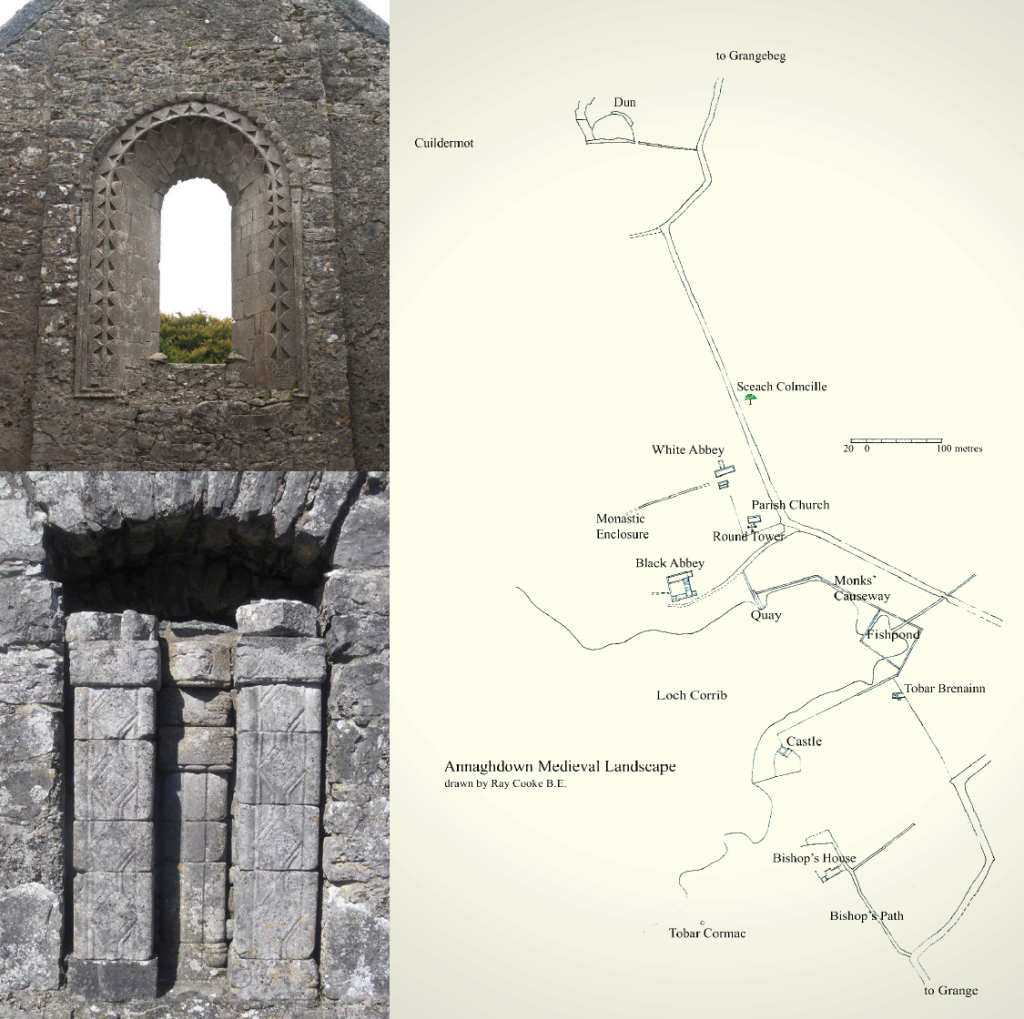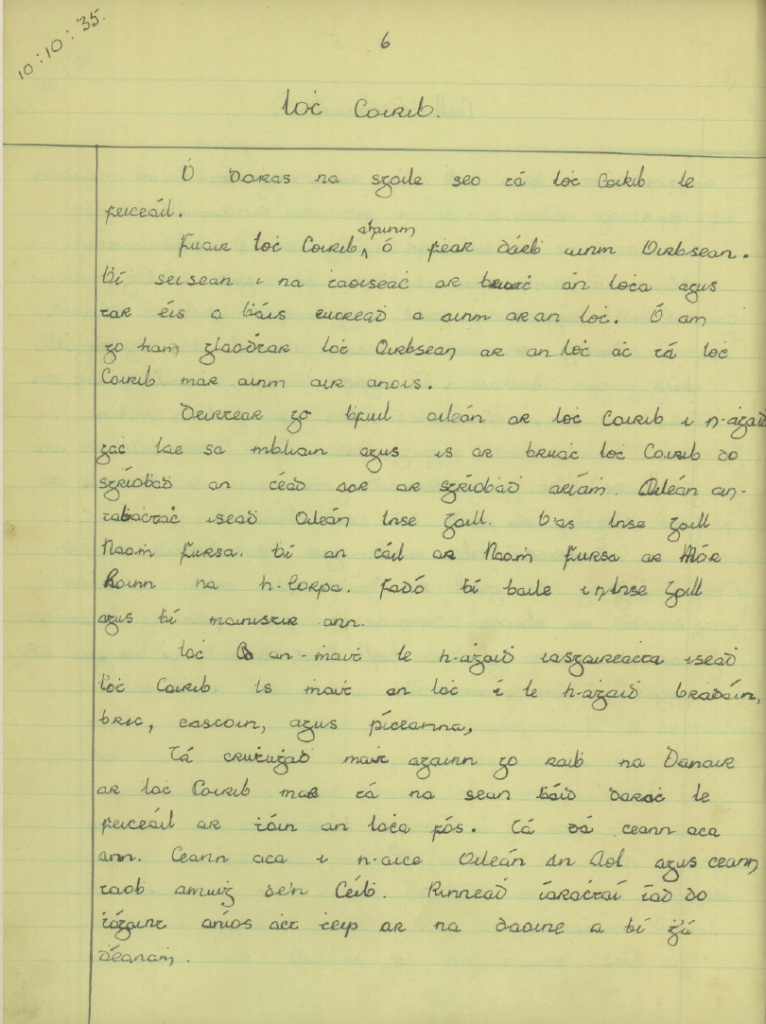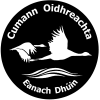Monastic and Medieval Annaghdown
Compiled by Dr Jessica Cooke
The medieval monastery and bishopric of Annaghdown was once the most important ecclesiastical centre in Connacht after Tuam Archdiocese. The monastery of Annaghdown was founded by St Brendan and his sister St Briga around 550 AD in the territory of the little-known Delbhna Cuil Fabhair, on the south-east shore of Lough Corrib.
This territory of Magh Seola (later the barony of Clare) was taken over after 800 by the Uí Briúin Seóla, ancestors of the Uí Fhlaithbertaig, and Annaghdown grew in power, attracting in the late 12th century two Continental monastic orders, the Arrouaisians and Premonstratensians, and rising after 1179 to become one of the five bishoprics of Connacht.

Though the bishopric fought a long battle to resist absorbtion by the Archdiocese of Tuam, the monastery thrived until its final dissolution in the late 16th century. The papal records indicate that the Uí Mheallaig sept of the Uí Fhlaithbertaig were the hereditary churchmen of Annaghdown.
In the early 13th century, bishop Murchad O’Flaithbertaig’s role as papal judge investigating Norman intrusions into Irish dioceses may have influenced him to construct (or restore) a round tower at Annaghdown in 1238, the last ever to be raised of these quintessentially Gaelic buildings.
The Medieval Landscape
The medieval landscape at Annaghdown is unusually well-preserved. As well as the two abbeys, there are remains of the monastic enclosure, old oratory, ancient parish church with one of the finest examples of Hiberno-Romanesque sculpture in its east window, and the stump of the round tower. In the surroundings lie the late-12th century bishop’s palace and its successor the 15th century castle, the monk’s fishpond and causeway, the holy wells of St. Brendan and St. Cormac, and the ringfort recorded in the annals as the seat of the Uí Flaithbertaig which likely gave its name to Annaghdown: the marsh of the fort.

the Arrouaisian Abbey; right: layout of the medieval landscape
Bealoideas – Folk Memory
Not only is the medieval landscape unusually preserved at Annaghdown, so is the folk memory of its illustrious monastic past. This oral tradition is recorded in the UCD archive of the Irish Folklore Commission, which collected béaloideas in the area both through the national school and directly from local people after the independence of the state. There are accounts of the holy wells not only of Brendan and Cormac but also a well of St. Briga, now lost, and of their patterns; stories of the monks buying produce from the ringfort. While the annals for 929-30 record that 60 viking ships from Limerick plundered the monasteries of Loch Corrib, only the folklore recalls two sunken Viking ships that apparently lie on the lakebed by the monastery.
As a living subject, béaloideas of the monastic past can still be gathered in the area. Seniors in the community can point out ‘the bishop’s palace’, the ‘bishop’s path’ and the ‘monks’ fishpond’.





May I ask if this is published in print? I am interested in the Arroasian connection, and the possibility that this house was involved in the refoundation of the nunnery of Inishmain Abbey, Co. Mayo.
My interest stems from a possible connection between a particular form of horse cheek-piece and activities at these Arroasian houses and Kilculliheen, Co. Waterford.
Any information would be gratefully received.
Best wishes
Brian Scott